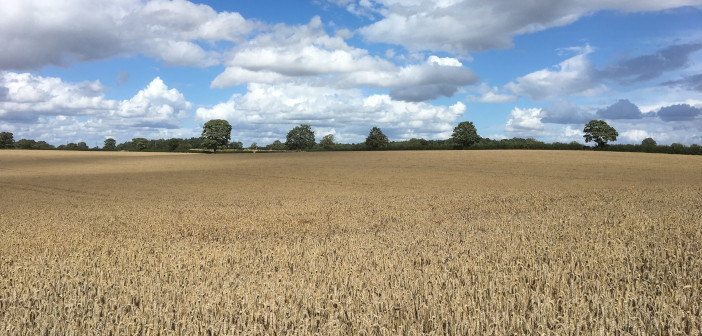Agrovista’s Klorofill crop enhancer is said to improve chlorophyll production and maximise green leaf area to produce impressive yield increases in cereal crops. Klorofill is a liquid formulation of pentanoate, an organic compound that contains a keto acid that helps boost chlorophyll manufacture.
“Chlorophyll is essential for photosynthesis, so maintaining efficient production is key for healthy yields and profits,” said Agrovista technical manager John Murrie.
“Klorofill can help high potential crops live up to their promise by optimising yield, quality and return on investment, especially during rapid spring growth, when chlorophyll production can lag demand.
“Plants can also be subject to stress during these times, which causes them to reduce chlorophyll production, compounding the problem.
“Pentanoate can reverse the suppression of the chlorophyll pathway, significantly increasing the net photosynthetic rate and gas exchange capacity in stress conditions.
“Klorofill seems to build a bigger flag leaf and convert this into yield in many cases. We’ve seen 0.4-0.5t/ha increases in wheat and barley crops on the farm.”

Derived from plant material, Klorofill is supplied in a fully soluble and tank-mixable liquid, applied at one litre per hectare. It can be partnered with fungicides, plant growth regulators and magnesium (also vital for chlorophyll) and other nutrients.
On winter wheat and winter feed barley, the product should be applied at T2 for maximum benefit, and T1 on winter malting barley. On spring barley the optimum timing GS30 and it is not recommended on malting crops after that time.
On farm results
Jim Anderson at Newton of Guthrie, near Arbroath, Angus, was keen to try Klorofill after getting good results with Terrasorb, an amino acid-based biostimulant designed to aid establishment and relieve early crop stress.
“When Andy Steven, our Agrovista agronomist, mentioned the benefits of Klorofill, I thought it was worth looking at, but I still wanted to see the results before I spent too much money,” he said.
Mr Anderson treated five hectares of winter wheat and the same area of winter barley, both grown on medium loam soils and treated with one litre per hectare at T2. According to the combine’s yield meter, this achieved a 0.3-0.4 tonne per hectare uplift in the wheat, and 0.6 tonnes in barley.
“In the wheat, you could see to the mark where we had applied it – the flag leaf was bigger and greener and the whole crop looked healthier,” said Mr Anderson.
“The barley was different – I couldn’t see any difference in the growing crop, but when the combine went in it was obvious which area had the Klorofill. On the back of these results, I’m now prepared to invest.”
This season, Mr Anderson is treated 43 hectares of wheat for feed and distilling, and 30 hectares of feed winter barley.
“Even if crops look set up well, after what I saw last year I’d have no qualms about using it,” he said. “We maybe won’t always get as big a return, but you never know what’s around the corner – it’s good insurance for the money.”


